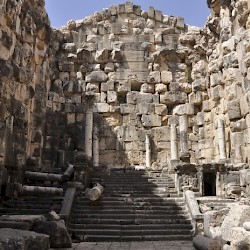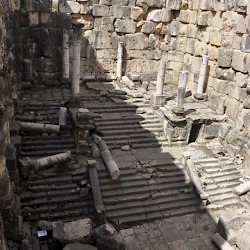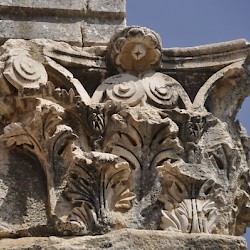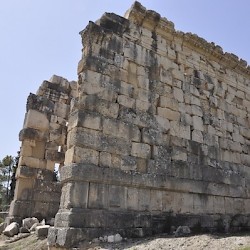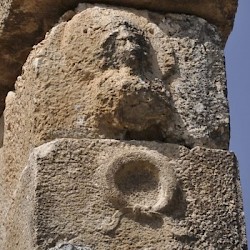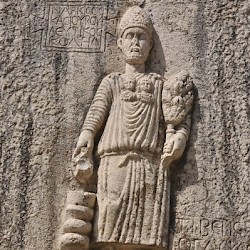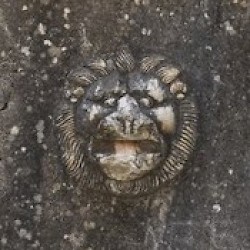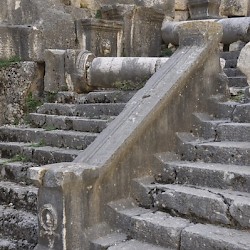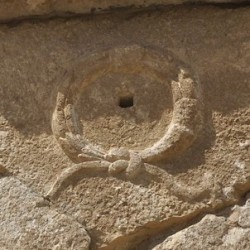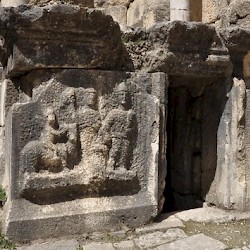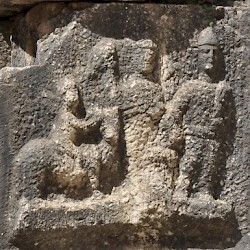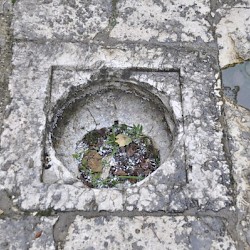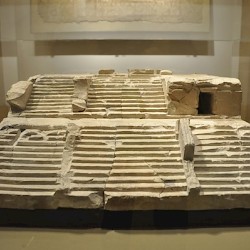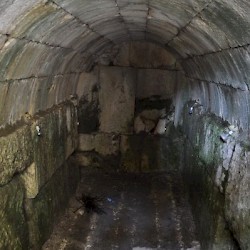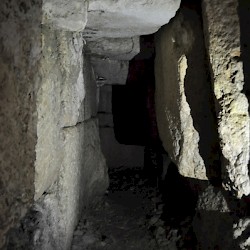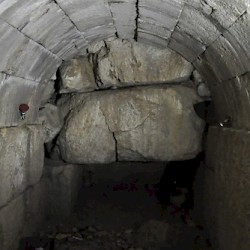Nihata, Large temple
Nihata: site in the Bekaa valley with three Roman temples, modern Niha. The name is Syriac and means "tranquil".
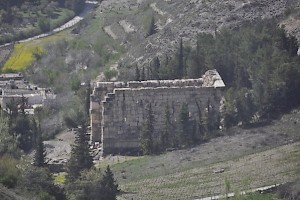
Standing on a steep hill slope, the Large Temple ("Temple A") still dominates the small village of Niha. In Antiquity, its façade must have contained four columns with Corinthian capitals. This temple, built in the second century, used as the oracle of the god Hadanares, who was comparable to the Baal-Zeus-Jupiter of Baalbek or to Hadad, and the Syrian goddess Atargatis. The temple was still in use when it was destroyed by an earthquake.
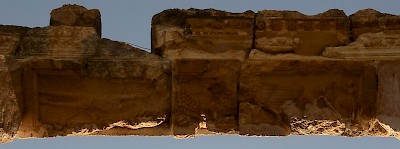
To the left and right of the main entrance are doors; the left one leads to a staircase that allows you to look into the sanctuary from quite high. (An arrangement similar to the one in the temple of Bacchus in Baalbek and the eastern temple in Aïn Akrine.)
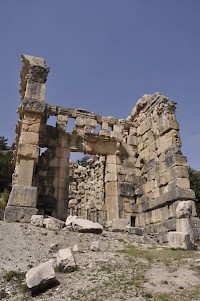
The façade walls are decorated with wreaths, but there's also an exceptionally fine portrait of a priest named Narkisos, with a conical hat and - on his breast - the portraits of Hadanares and Atargatis. The inscription (Ναρκισος Κασιου βουλευτικος κοληα) identifies him as member of the Council of Baalbek, although the last word is unusual.
The cella, which was graced by a water canal, consists of a lower part and a higher "adyton" (the part of the sanctuary that was only accessible to the priests). This latter part is similar to the adyton in the temple of Bacchus in Baalbek. Between these two sections are two stairs; at the mid-level is the entrance to a U-shaped crypt. Its function is not known, but it may have been the place of the oracle. That it was important, can perhaps be deduced from the fact that the architect's model of the stairs and crypt was carefully preserved.
Next to the entrance of the crypt is another relief, showing an animal with someone riding on it, a woman, and someone who can - because of the resemblance to Narkisos - be identified as a priest.
